This pub takes its name from the 17th-century coaching inn which gave the area its name. The original Angel was built in 1639, on the site of 1 Islington High Street. Replaced in 1819 and again at the turn of the 20th century, it remained a pub until 1921, when it opened as Lyons Corner House.
Framed photographs, drawings and text about The Angel.
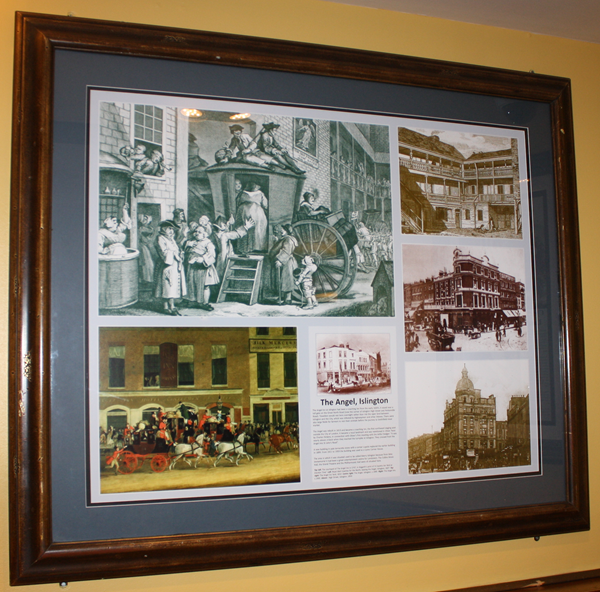
The text reads: The Angel Inn at Islington had been a coaching inn from the early 1600’s. It stood near a toll gate on the Great North Road (now the corner of Islington High Street and Pentonville Road). Travellers would rest here overnight rather than risk the open land between Islington and the City, which was infested by highwayman and other thieves. There were also large fields for farmers to rest their animals before the journey to Smithfield meat market.
The Angel was rebuilt in 1819 and became a coaching inn, the first northward staging post outside the City of London. It became a local landmark and was mentioned in Oliver Twist by Charles Dickens, in connection with Oliver’s first meeting with the Artful Dodger: “it was nearly eleven o’clock when they reached the turnpike at Islington. They crossed from The Angel into St John’s Road”.
A new building in pale terracotta stone with a corner cupola replaced the earlier building in 1899. From 1921 to 1959 the building was used as a Lyons Corner House.
The area in which it was situated used to be called Merry Islington because from time immemorial it had been a great entertainment centre for Londoners. The Collins Music Hall, the Grand Theatre and the Philharmonic Hall were all situated here.
Top left: The courtyard of the Angel Inn in 1747, in Hogarth’s print of ‘A Country Inn Yard at Election Time’
Left: Royal Mail Coaches for the North, leaving the Angel, Islington, 1827
Top right: The Angel Inn Yard, 1819
Centre right: The Angel, Islington, c.1895
Right: The Angel Inn, c.1905
Above: High Street, Islington, 1850.
Framed photographs, drawings and text about The Angel.
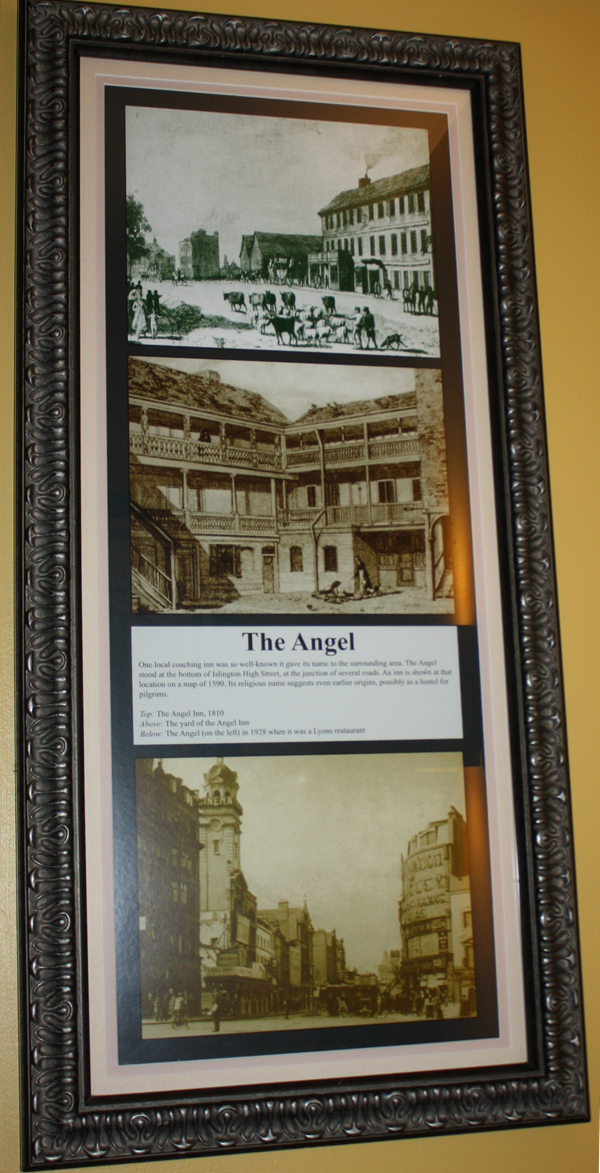
The text reads: One local coaching inn was so well-known it gave its name to the surrounding area. The Angel stood at the bottom of Islington High Street, at the junction of several roads. An inn is shown at that location on a map of 1590. Its religious name suggests even earlier origins, possibly as a hostel for pilgrims.
Top: The Angel Inn, 1810
Above: The yard of the Angel Inn
Below: The Angel (on the left) in 1928 when it was a Lyons restaurant.
Framed photographs and text about Lilian Baylis.
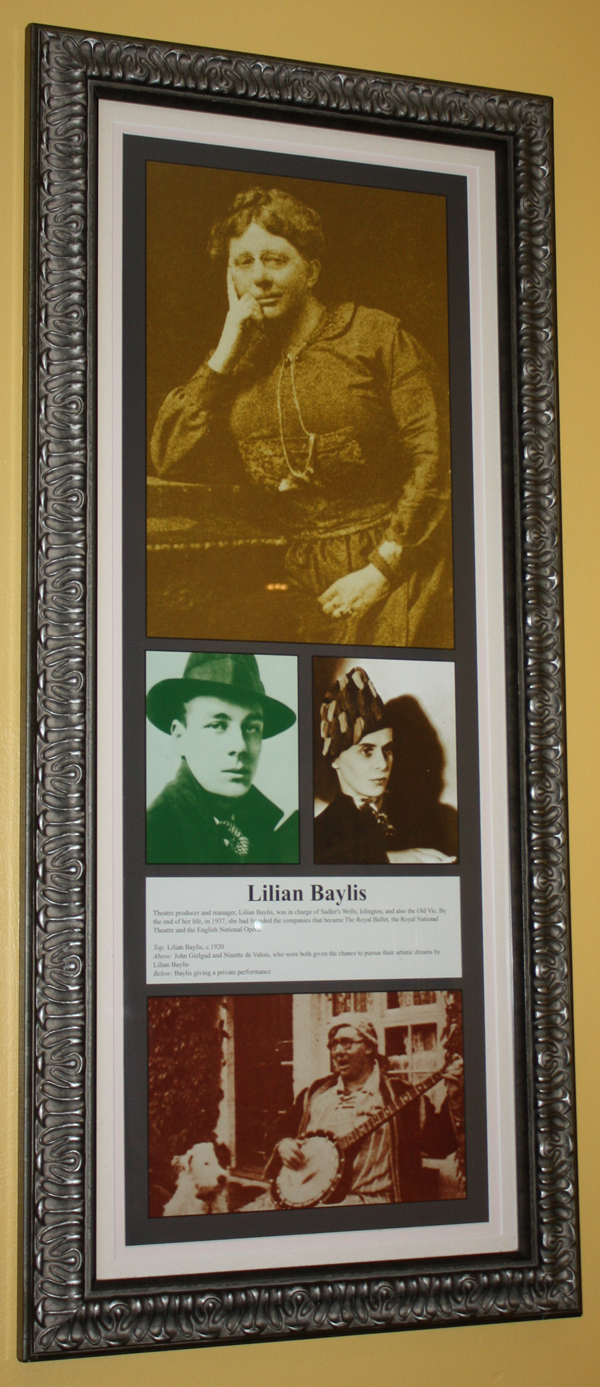
The text reads: Theatre producer and manager, Lilian Baylis, was in charge of Sadler’s Wells, Islington, and also the Old Vic. By the end of her life, in 1937, she had founded the companies that became The Royal Ballet, the Royal National Theatre and the English National Opera.
Top: Lilian Baylis, c.1920
Above: John Gielgud and Ninette de Valois, who were both given the chance to pursue their artistic dreams by Lilian Baylis
Below: Baylis giving a private performance.
A framed drawing, photograph and text about Charles Lamb.
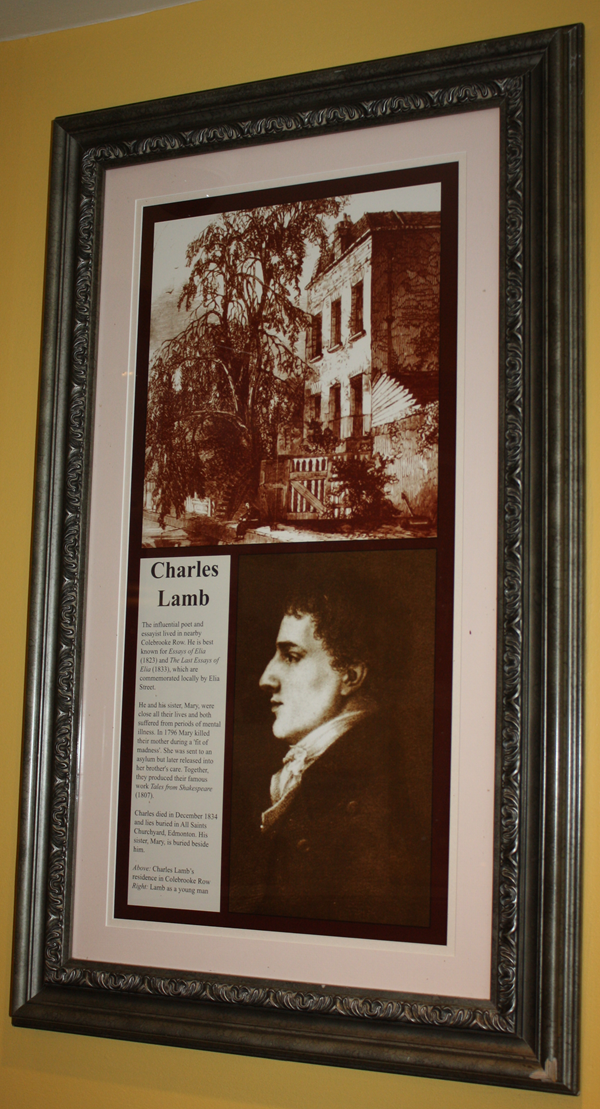
The text reads: The influential poet and essayist lived in nearby Colebrooke Row. He is best known for Essays of Elia (1823) and The Last Essays of Elia (1833), which are commemorated locally by Elia Street.
He and his sister, Mary, were close all their lives and both suffered from periods of mental illness. In 1796 Mary killed their mother during a ‘fit of madness’. She was sent to an asylum but later released into her brother’s care. Together, they produced their famous work Tales from Shakespeare (1807).
Charles died in December 1834 and lies buried in All Saints Churchyard, Edmonton. His sister, Mary, is buried beside him.
Above: Charles Lamb’s residence in Colebrooke Row
Right: Lamb as a young man.
Framed photographs and text about The Almeida.
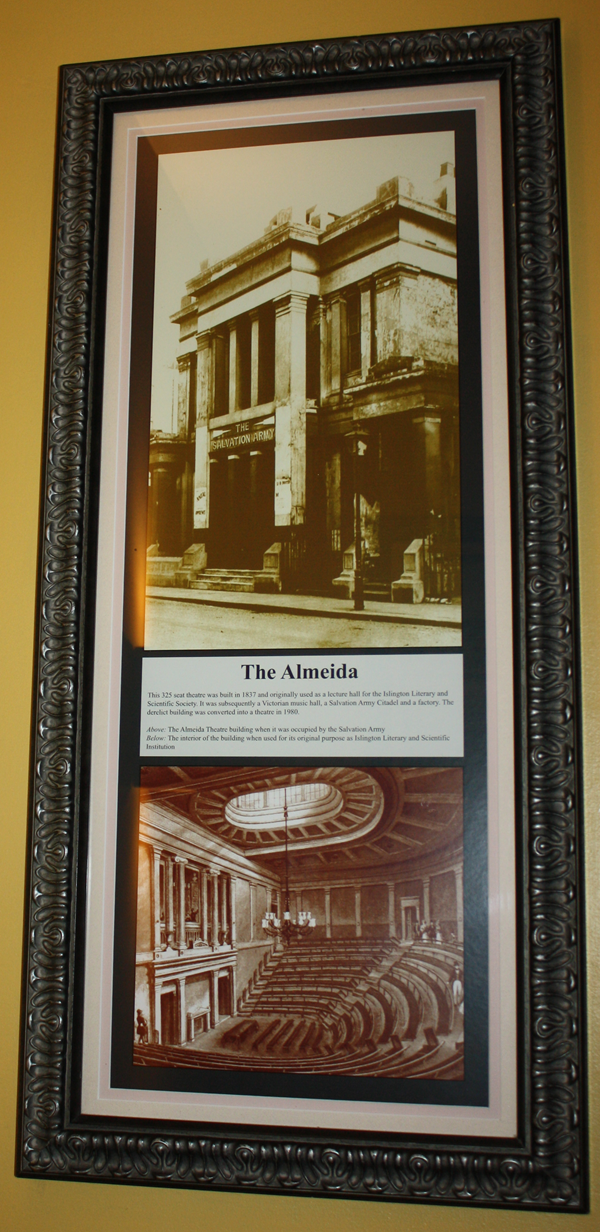
The text reads: This 325 seat theatre was built in 1837 and originally used as a lecture hall for the Islington Literary and Scientific Society. It was subsequently a Victorian music hall, a Salvation Army Citadel and a factory. The derelict building was converted into a theatre in 1980.
Above: The Almeida Theatre building when it was occupied by the Salvation Army
Below: The interior of the building when used for its original purpose as Islington Literary and Scientific Institution.
Framed photographs and text about the theatres in Islington.
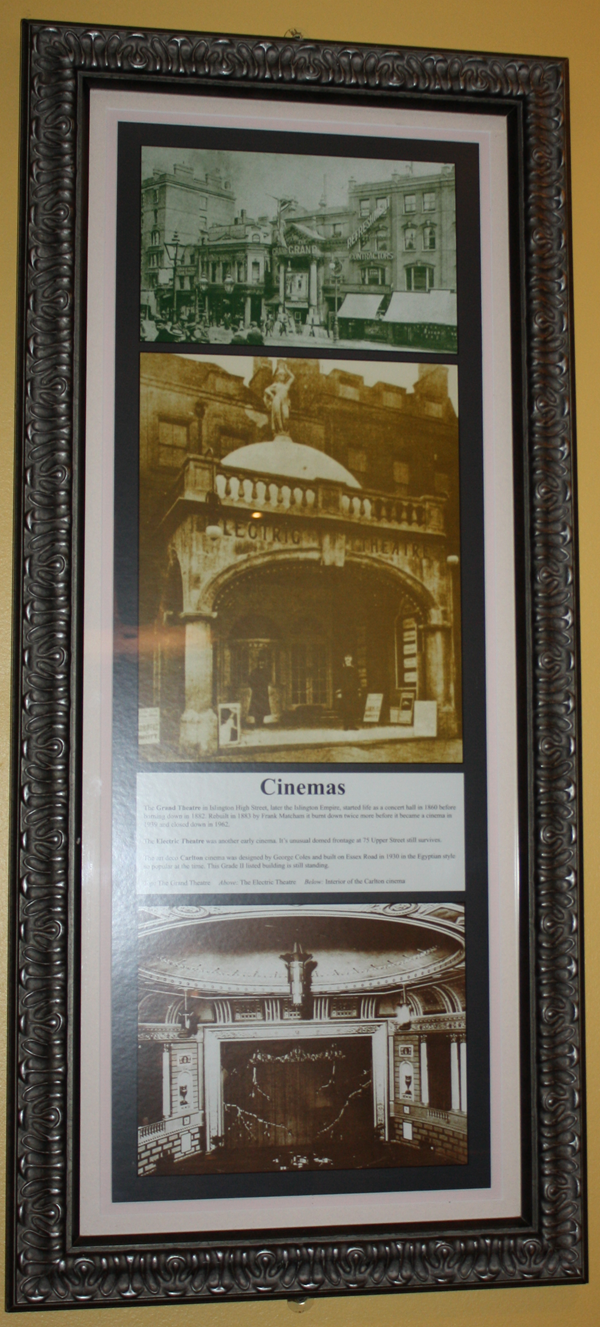
The text reads: The Grand Theatre in Islington High Street, later the Islington Empire, started life as a concert hall in 1860 before burning down in 1882. Rebuilt in 1883 by Frank Matcham it burnt down twice more before it became a cinema in 1939 and closed down in 1962.
The Electric Theatre was another early cinema. Its unusual domed frontage at 75 Upper Street still survives.
The art deco at Carlton cinema was designed by George Coles and built on Essex Road in 1930 in the Egyptian style so popular at the time. The Grade II listed building is still standing.
Top: The Grand Theatre
Above: The Electric Theatre
Below: Interior of the Carlton cinema.
Framed prints and text about entertainment in Islington.
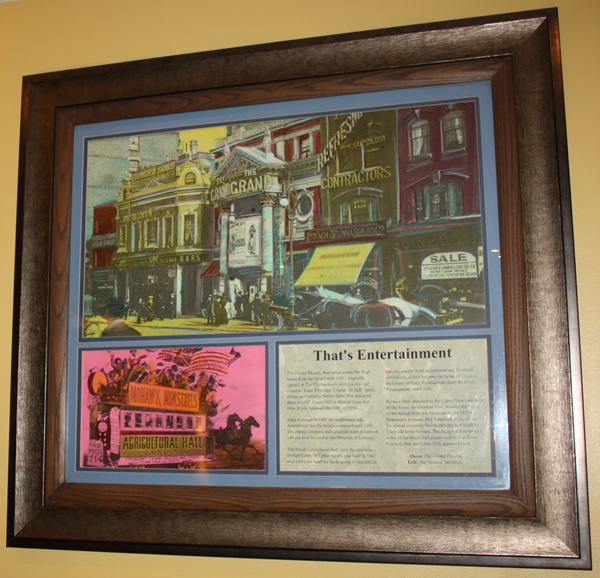
The text reads: The Grand Theatre that stood across the High Street from the Angel until 1981, originally opened as The Philharmonic hall for musical concerts. Later it became a venue for light opera, drama and varieties before films first appeared there in 1897. From 1932 it showed films full time. It was renamed the ABC in 1938.
After it closed in 1962 the auditorium was demolished, but the facade remained until 1981. The classic columns and caryatids were preserved, and can now be seen in the Museum of London.
The Royal Agricultural Hall, now the Business Design Centre in Upper Street, was built in 1861 on a cattle lair used for herds going to Smithfield.
Initially used to hold agricultural and livestock exhibitions, it later became the home of circuses, the Grand Military Tournament (later the Royal Tournament), and Crufts.
Berners Hall, attached to the Upper Street entrance of the Royal Agricultural Hall, became the home of the famed Mohhawk Minstrels in the 1870s. Immensley popular, they remained at the venue for almost a century before moving to Piccadilly. Their old home became the Islington Empire and some of the music hall greats such as Dan Leno, Cissie Loftus and Little Tich appeared there.
Above: The Grand Theatre
Left: The Mohawk Minstrels.
Framed photographs and drawings of Islington.
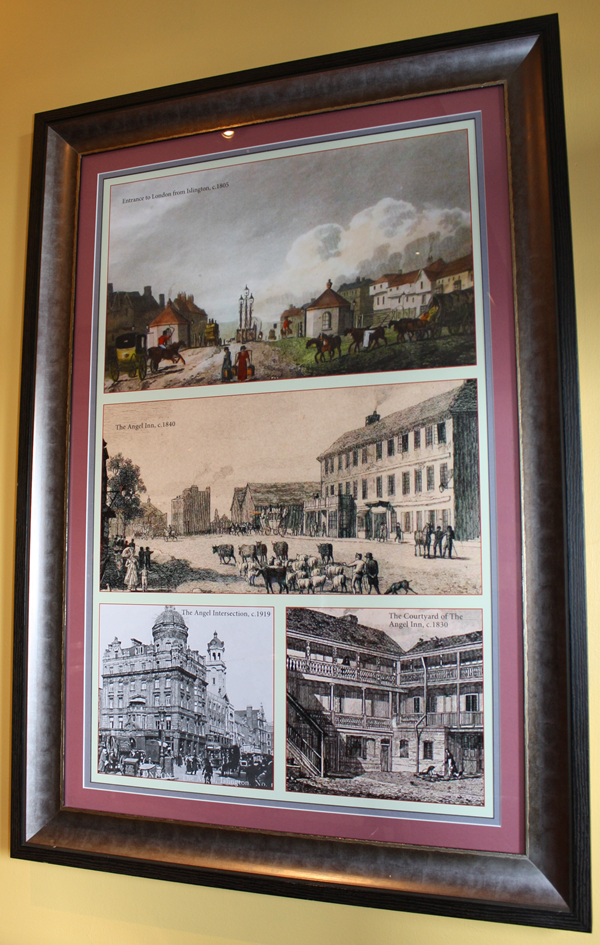
Top: Entrance to London from Islington, c.1805
Middle: The Angel Inn, c.1840
Bottom left: The Angel intersection, c.1919
Bottom right: The Courtyard of The Angel Inn, c.1830.
A framed painting of the North Country Mails at The Peacock Inn (near this site), by James Pollard, c1830.
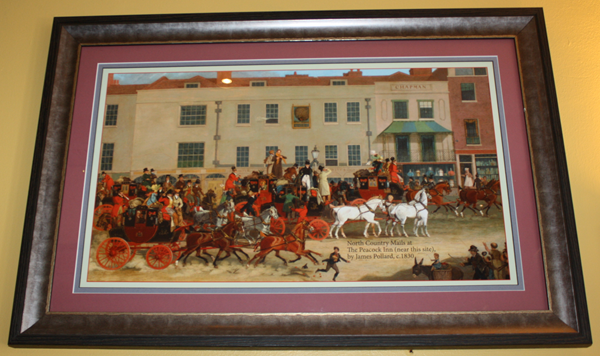
A framed photograph of Chapel Street, Islington, c1906.
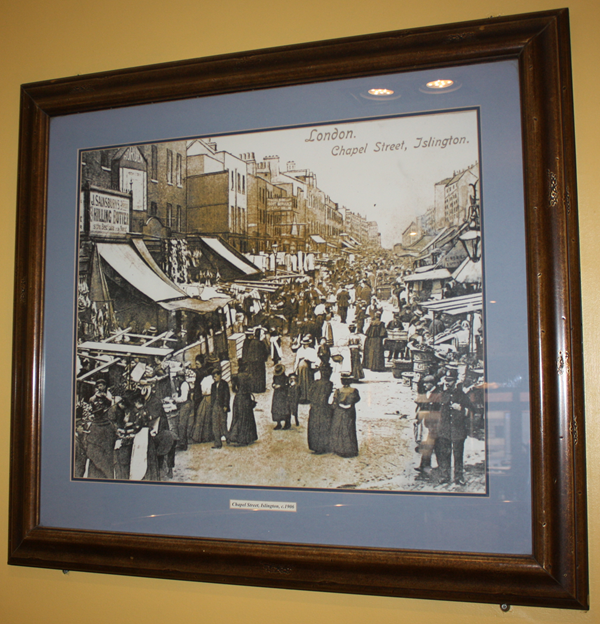
A framed print by Lorna Hope, entitled Islington.
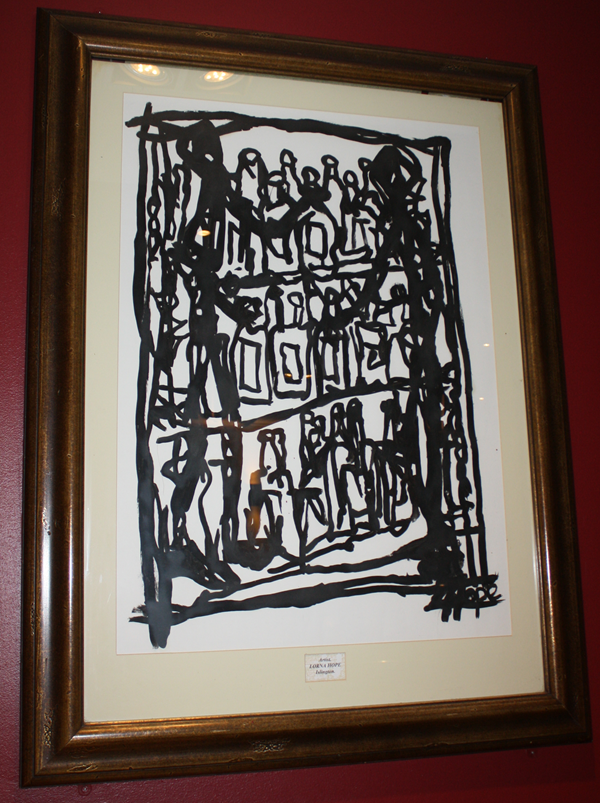
The building where the Angel Inn once stood, rebuilt in 1899.
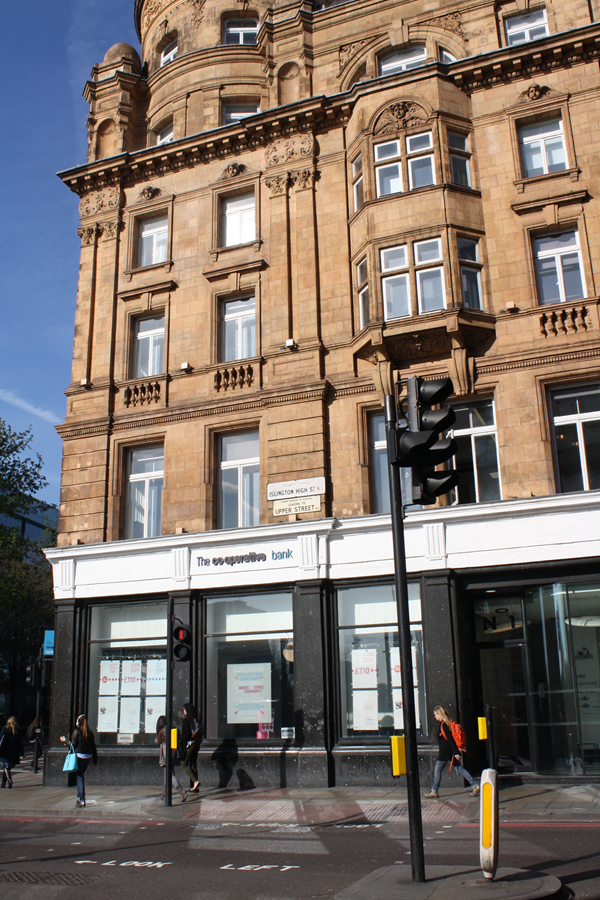
External photograph of the building – main entrance.
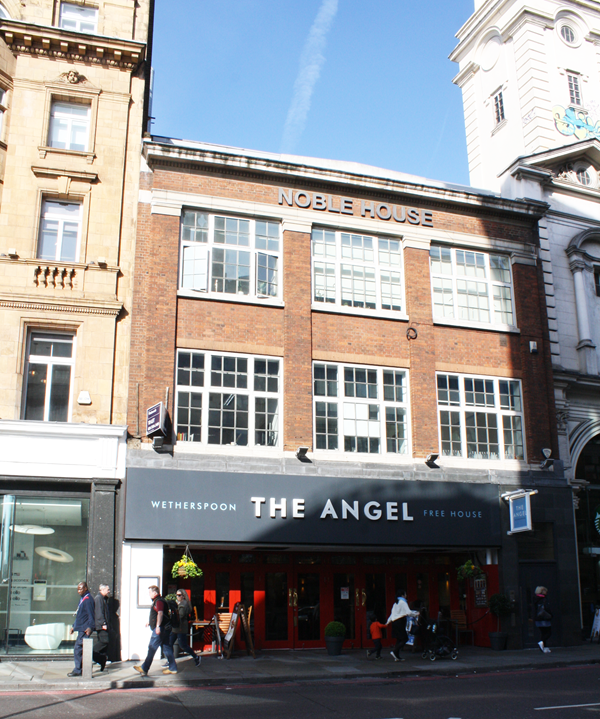
If you have information on the history of this pub, then we’d like you to share it with us. Please e-mail all information to: pubhistories@jdwetherspoon.co.uk